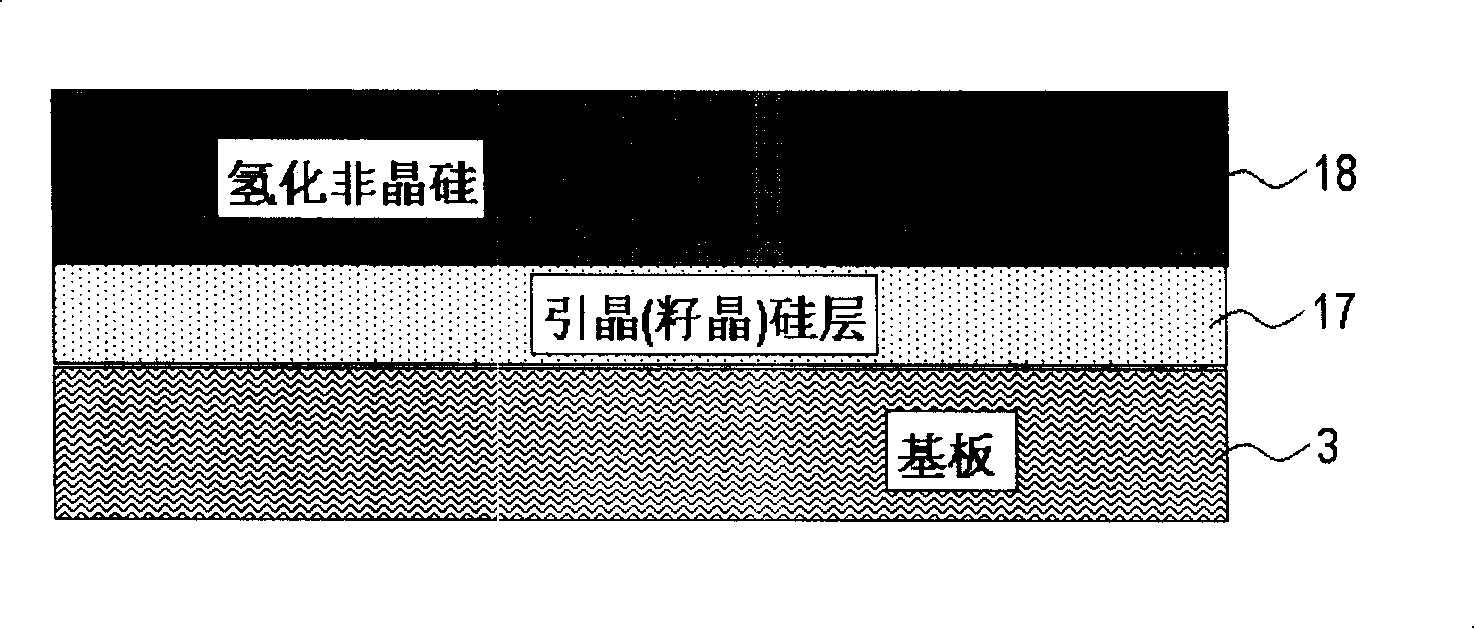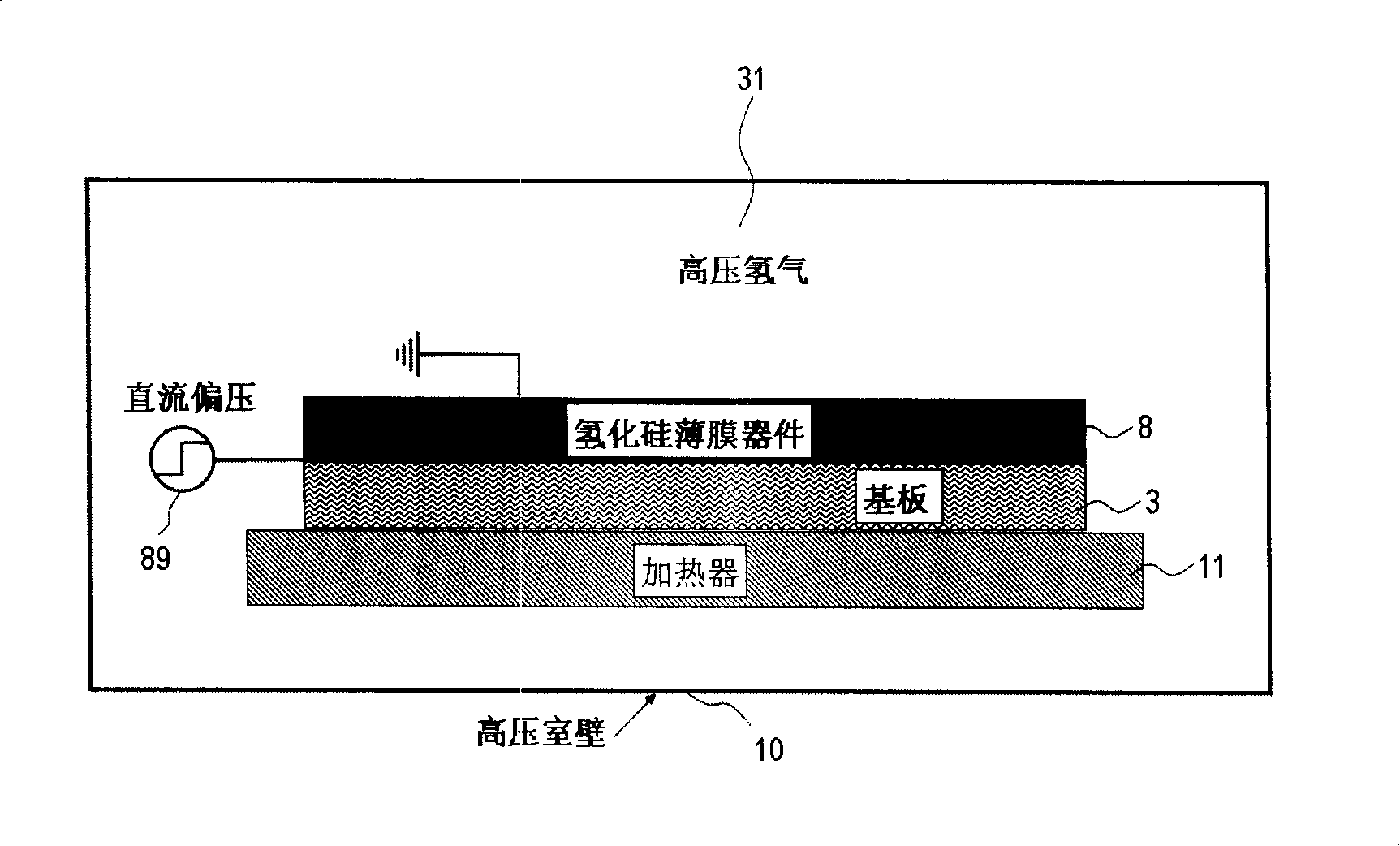Forming method for micro crystal silicon film
A hydrogenated microcrystalline silicon and thin-film technology, which is applied in photovoltaic power generation, electrical components, climate sustainability, etc., can solve problems such as difficulty in ensuring uniformity, microcrystalline silicon solar cells not having low-cost competitiveness, and consumption
- Summary
- Abstract
- Description
- Claims
- Application Information
AI Technical Summary
Problems solved by technology
Method used
Image
Examples
Embodiment Construction
[0013] The present invention employs a two-step process to obtain high-quality microcrystalline silicon. The first step is to use the method of plasma enhanced chemical vapor deposition to obtain a hydrogenated amorphous silicon film with a seed layer at the bottom on the substrate, the growth rate of the amorphous silicon film is not lower than 1 nm / s, and the thickness is not more than 3 Microns. The second step is as figure 2 As shown, the silicon hydride material 8 placed on the substrate 3 is placed on a support base 11 with a heating function in the high-pressure chamber 10, and a high-pressure hydrogen gas 31 of not less than 500 atmospheres is introduced into the high-pressure chamber. At a temperature of 300°C, the material is annealed for 3-10 hours to obtain hydrogenated microcrystalline silicon suitable for photoelectric conversion. During the high pressure medium temperature annealing process, if the hydrogenated silicon film is placed in a device, a DC bias vo...
PUM
| Property | Measurement | Unit |
|---|---|---|
| Thickness | aaaaa | aaaaa |
| The average particle size | aaaaa | aaaaa |
Abstract
Description
Claims
Application Information
 Login to View More
Login to View More - R&D
- Intellectual Property
- Life Sciences
- Materials
- Tech Scout
- Unparalleled Data Quality
- Higher Quality Content
- 60% Fewer Hallucinations
Browse by: Latest US Patents, China's latest patents, Technical Efficacy Thesaurus, Application Domain, Technology Topic, Popular Technical Reports.
© 2025 PatSnap. All rights reserved.Legal|Privacy policy|Modern Slavery Act Transparency Statement|Sitemap|About US| Contact US: help@patsnap.com


